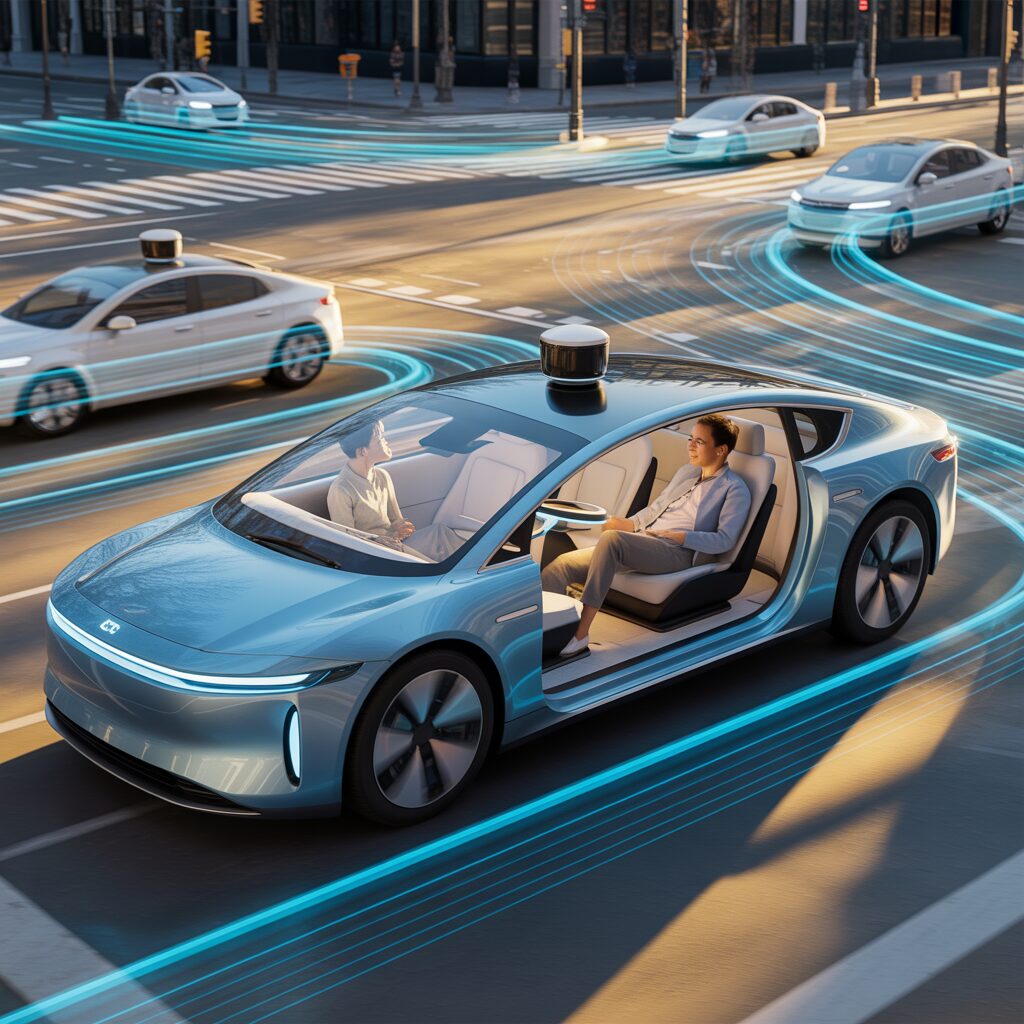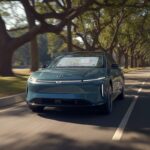
Autonomous driving is no longer a futuristic sci‑fi scenario—today’s vision of self‑driving cars, robotaxis and driver‑less trucks is being built piece by piece by industry insiders who are applying advanced strategies to overcome the real‑world challenges.
In this post we’ll dive into what those insiders are doing, what game‑changing insights are emerging, and what advanced strategies are proving effective as the world moves toward higher levels of autonomy.
The insider view: what the experts are saying
Within the autonomous vehicle (AV) industry, there’s a consensus emerging: the technical “will‑it‑work” question is largely solved; the bigger challenge now is scaling, commercialising and making the business case.
According to a recent interview with three AV CEOs, “technology is no longer the bottleneck” — the question is how to turn autonomy into a viable, profitable business. Business Insider
In parallel, a report from McKinsey & Company estimates that the passenger‑car segment of autonomous driving could generate US$300‑400 billion in revenue by 2035 — a clear signal of the scale of the opportunity. McKinsey & Company
These insider viewpoints serve as a launch pad to examine the game‑changing insights and advanced strategies being deployed.
Game‑changing insight #1: Autonomy is more than sensors & software
A key insight from industry insiders is that merely stacking more sensors or computing power isn’t enough.
Advanced strategies shift the focus to the ecosystem: the network of partnerships, data platforms, fleet operations, regulatory alignment and infrastructure.
In fact, a strategy article notes that automakers must build networks that include software specialists, cloud/digital infrastructure providers, and mobility‑service providers — not just traditional vehicle OEMs. Oliver Wyman
Leaders are realizing that to win in autonomous driving, you need to master the full value chain: from vehicle hardware to data & software, from fleet operations to user interface and business model design.
Game‑changing insight #2: Data strategy and edge‑case handling matter more than headline tech
When insiders discuss autonomous systems, “edge‑cases” (rare or unexpected driving scenarios) come up again and again.
As one CEO put it: the technology works in many standard conditions, but the path to large‑scale deployment hinges on dealing with all the “long‑tail problems”. Business Insider
This leads to an advanced strategy: deliberately building data pipelines, simulation platforms and fleet operations that expose vehicles to large numbers of rare events.
In effect, it’s not just about how many miles you drive, but how many different miles you drive.
Simulation, virtual testing, and real‑world fleet data are now core elements of autonomous‑driving strategy.
For example, companies are using large‑scale simulation environments to train AI models on edge‑cases that are ethically or practically impossible to create in the real world.
That’s a major shift: from “we’ll test until it works” to “we’ll train until it knows everything it might encounter”.
Advanced strategy #1: Modularisation and scalable stacks
Another advanced strategy that insiders favor is the shift from monolithic system design to modular stacks and scalable software architectures.
The argument: as vehicles become software‑driven platforms, you need modular building blocks (perception, prediction, planning, decision making) that can be reused across vehicle models, geographies and use‑cases.
For instance, recent academic work proposes an architecture called UniAD which unifies multiple driving‑tasks into one network in order to streamline coordination between perception, prediction and planning. arXiv
The payoff for the industry: lower cost per unit, faster adaptation to new markets, easier upgrades, and better maintainability in a world where autonomy must evolve continuously.
Advanced strategy #2: Strategic partnerships & ecosystem plays
Insiders emphasize that winning the autonomous‑driving race isn’t about being the lone car company with the smartest algorithm.
The advanced strategy is collaborative: automakers, technology firms, infrastructure providers, regulators and mobility‑service players must integrate.
For example, McKinsey notes that success will depend on the ability of OEMs, suppliers and tech‑providers to form “powerful coalitions” and scale their business models in a fast‑changing market. McKinsey & Company+1
These partnerships allow companies to share risk, pool data, optimize fleet operations, fast‑track regulatory approvals and enter new geographies.
From an insider perspective, the most dynamic AV players treat partnerships as part of their competitive strategy — not just a peripheral activity.
Game‑changing insight #3: Business model innovation + deployment strategy matter
Autonomous driving insiders stress that the technologies alone don’t guarantee success — the business model and route‑to‑market are just as critical.
For example, how will autonomous fleets be monetized? Will they be sold as vehicles, rented, shared, or deployed as services?
A McKinsey report argues that being “convenient and connected” will define winners in the passenger‑car segment — those who deliver not just driverless capability, but seamless mobility experiences. McKinsey & Company
Hence the advanced strategy: design the offering around the use‑case (shared mobility, robo‑taxi, autonomous freight, personal car) rather than starting from the hardware.
Insiders realise that even with Level 3 or Level 4 autonomy, customer acceptance, regulatory approval and operational logistics are big variables.
Expert‑Only Knowledge: what insiders are quietly focusing on
While many external observers focus on sensors, self‑driving algorithms or flashy trials, insiders are quietly focusing on:
-
Operational safety and validation frameworks: Running fleets at scale to accumulate millions of miles of driving data, logging edge‑cases, and building the “safety case” for regulators.
-
Vehicle‑to‑everything (V2X) and infrastructure integration: Autonomous vehicles won’t operate in a vacuum—they will benefit strongly from connected infrastructure, smart road sensors, high‑precision maps and shared data networks. For example, a proposed architecture “Infrastructure Enabled Autonomy” suggests leveraging road‑side compute and sensors to share driving load between vehicle and infrastructure. arXiv
-
Continuous over‑the‑air updates and fleet learning: Insiders argue that true autonomy will look more like a software platform than a car—vehicles that improve over time, learn from each other, and receive updates just like phones or computers.
-
Geo‑fenced deployment and incrementality: Many insiders favour the roll‑out of autonomy in controlled geographies and use‑cases first (e.g., highways, fixed routes, campuses) rather than “every road everywhere” from day one. The strategy is to scale gradually and expand once systems are proven.
Applying the knowledge: how you can keep ahead
If you’re in the mobility business or simply want to understand autonomous driving deeply, here are actionable ways to apply these insider insights and strategies:
-
Map your ecosystem: Identify your role (OEM, supplier, software provider, fleet operator, infrastructure manager) and the network of partnerships you’ll need. Building the technology alone won’t win the race.
-
Define the use‑case first: Whether you’re planning a personal autonomous car, robo‑taxi service, delivery van or fleet of driverless trucks — design the model around the use‑case. Then align sensor suites, data needs, regulatory path and business model accordingly.
-
Build the data & simulation loop: Invest in simulation platforms, real‑world fleet data capture, edge‑case scenario generation, and continuous model refinement. Make your system learn from rare events, not just textbook driving.
-
Modularise your architecture: Design your software stack (perception, planning, control) so that you can reuse components, upgrade them independently, adapt for new hardware or geographies without rewriting everything.
-
Plan for continuous improvement: Consider your vehicle as part of a learning network—not a one‑time product. Build in over‑the‑air update capability, fleet orchestration, data sharing across vehicles, and a long‑term upgrade path.
-
Consider regulatory and infrastructure readiness: Autonomous driving isn’t just a technical challenge—it’s a policy, infrastructure and public‑trust challenge. Engage early with regulators, plan for connected infrastructure (V2X) and build transparent safety frameworks.
-
Start incrementally: Don’t bet everything on full autonomy tomorrow. Focus on lower‑complexity geographies, controlled use‑cases (campuses, highways, fixed bus routes), prove your tech, build trust, then expand.
By adopting these insider strategies and applying game‑changing insights, companies and innovators can position themselves ahead of the pack in the autonomous‑driving era.
The idea isn’t just to build a self‑driving car—it’s to build a scalable, trusted, profitable autonomy platform that works in the real world.
The momentum is there, the technology is capable, but the winners will be those who execute the full strategy thoughtfully.


